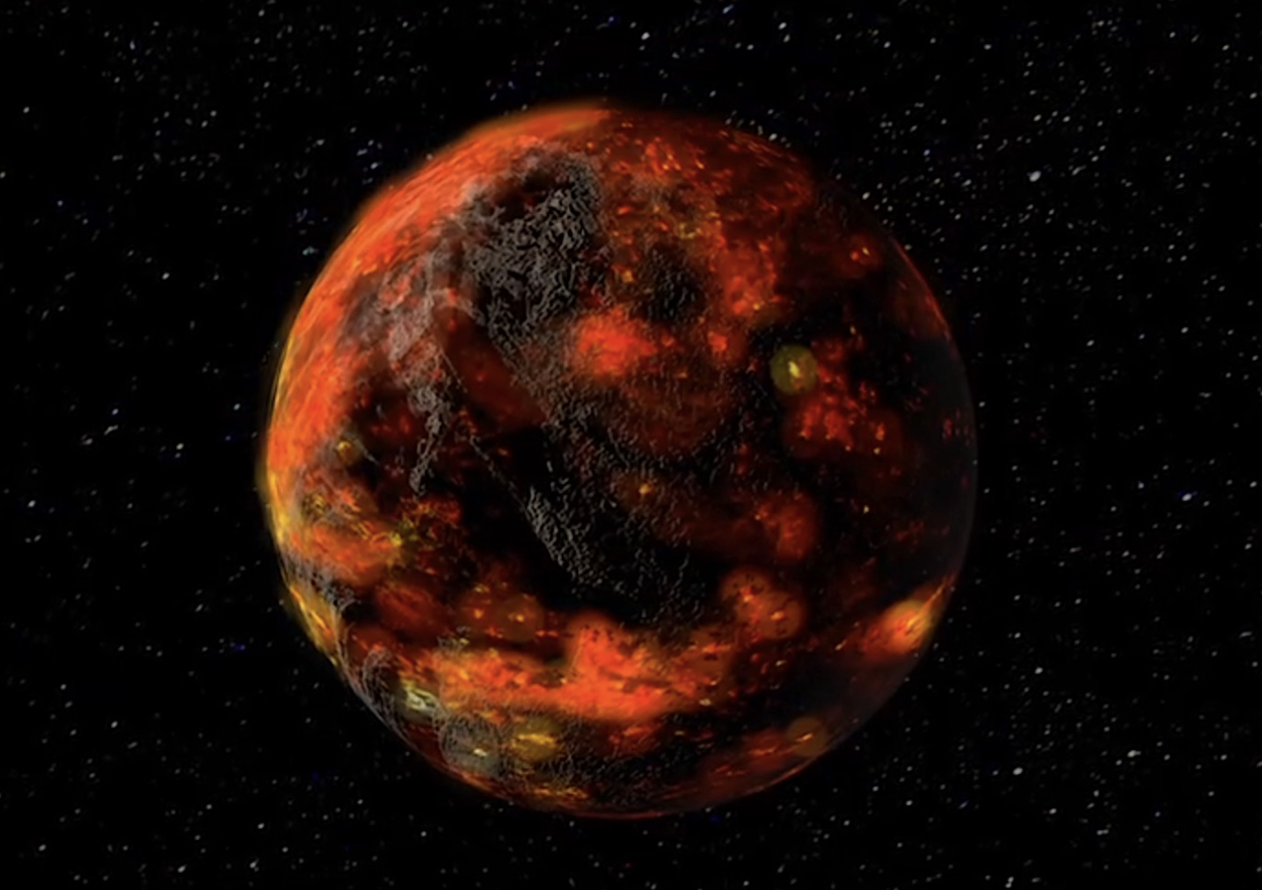Science Does not Exist in a (Lunar) Vacuum
An artist's concept of the Moon shortly after its formation, with a magma ocean and a newly forming rocky crust. Image: NASA Goddard
NASA’s Apollo missions helped us confirm that our celestial companion had a fiery origin tied to Earth. Soviet Luna missions were the world’s first robotic sample return missions, establishing the modern approach that fetching planetary material to Earth generates scientific results for decades. India’s Chandrayaan 1 orbiter discovered water on the Moon, revealing a dynamic lunar environment and catalyzing global interest in lunar exploration. Japan’s SELENE orbiter extensively mapped the Moon and found openings to long underground lava tubes. Samples fetched by China’s Chang’e 5 mission confirmed that the Moon was volcanically active and thermally complex geologically recently. And Chang’e 6 transformed our understanding of how our Moon evolved thanks to the first ever farside lunar samples.
These are profound discoveries that tie back to the history of Earth and potentially its water. The scientific exploration of our Moon has been a microcosm of what humans globally are cumulatively capable of. And it promises more still as a unique platform for radio cosmology, solar sciences, and unraveling the complex history of our Solar System.
But with increasing Moon missions, harsh lunar dust that can go orbital, congestion and lack of regulation in lunar orbit, the lunar south pole becoming a region of convergence and potential contest for technology, mining, infrastructure, and habitat development, and the changing geopolitical environment on Earth, our Moon’s scientific value as an extraordinarily unique time capsule could become increasingly inaccessible and gated.
That’s why the non-profit Lunar Policy Platform (LPP), with support from the Open Lunar Foundation, consulted key scientific organizations like COSPAR and the International Astronomical Union (IAU) as well as universities and research centers worldwide to understand nuances of the situation. In the ensuing guide, LPP finds that because science doesn’t exist in a vacuum, the intersection of national, commercial, technological, and strategic objectives means there’s no single way forward to accommodate the scientific pursuits of all. In its key takeaways from the guide, LPP notes a concluding remark pertinent to preserving lunar science for all:
“As lunar development accelerates, it’s tempting to fall back on familiar scripts: that science is neutral, that preservation requires exclusion, and that responsible actors will defer to experts. But the Moon is not just a research site. It’s a commons. [...] We can design governance tools that protect fragile sites without prioritising any one specific activity. Shared-use protocols, adaptive zoning, and rotational access are all terrestrially tested mechanisms that could allow multiple actors to coexist. [...] The challenge is to find that shared margin, ensure that protection does not entrench inequality, and that managed access does not become a proxy for power plays.”
The project is open to feedback from all stakeholders until August 17th.

